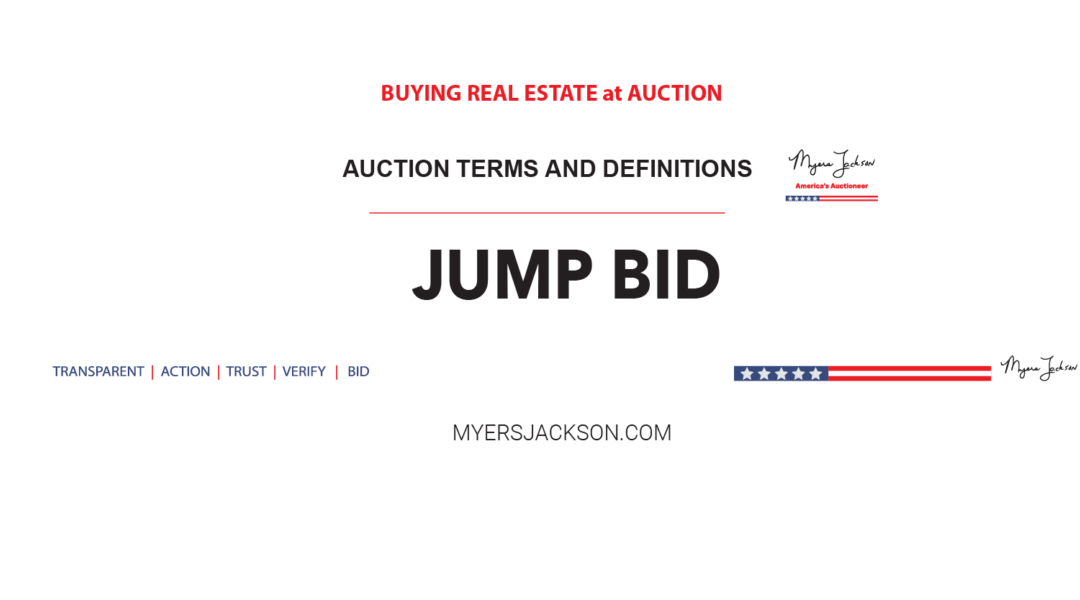JUMP BID
It is a bidding strategy by which a bidder increases the bid by more than the next accepted bid (such as placing your bid at $150 when the next accepted bid is $125). This practice is used by some bidders to discourage others from bidding in hopes of acquiring an item at a lower price. There are many theories on the effectiveness of this practice and a bidder who wishes to apply it does so at their own discretion. The auction company will not lower the price of an item that has been won by a “jump bid” with no other competing bids.
Let’s take a look at it the term jump bid.
 Sometimes a bidder will take an approach to jump the bid to scare off other participants. This is a strategy that some buyers will use. The auctioneer normally is keen to this situation. The auctioneer will make everyone aware that the bid process is a competitive open and public marketplace. However, the auctioneer must look at the intentions of that person. If it is a bid with credible actions the auctioneer can certainly take that into consideration and accept the offer but everyone must remember that the auction is not complete until the fall of the hammer.
Now let’s take a look at a second circumstance where someone would jump the bid. The auctioneer is asking an incremental amount. Let’s just say $1000 per occurrence and someone genuinely makes a bid of $2500 more than the auctioneer is asking. This is a circumstance where the buyer is attempting to jump the bid and will need to pay a fair market value for the property. Well, let’s go to an extreme. This could be a favorable position for everyone. In some auctions the auctioneer starts the bidding at a nominal amount. Say in the eyes of many or a tax value the property is worth $1 million. But the auctioneer cannot get the public to start the bidding at 1 million. It is customary that auctioneers will drop to a lower starting bid, let’s just say $50,000. Now, the buyer may say I will pay $800,000 for the property. Why would they do that? It is because maybe they have done research and they understand that the property values are much more than the $50,000 starting bid. And some buyers just want to cut to the chase and say “this is the amount I will pay”. In return, the auctioneer will evaluate the bid and process the offer in the formulated manner – in a live auction or online bidding platform. If there are no further advances in the bid, the auctioneer will present the highest offer to the seller in the situation. If the reserve was $1 million , the seller could accept a lower amount and confirm the sale. In this instance, auctioneers refer to this as bid confirmation or confirmation of sale.
For other terms and definitions
related to real estate auctions
For all active auctions,
and properties for sale
Get InTouch
Email:
411@myersjackson.com
Phone:
+1-844-400-2828 Phone
+1-469-460-4848 Text
Address:
Myers Jackson
P.O. Box 2014, Grapevine, TX 76099

